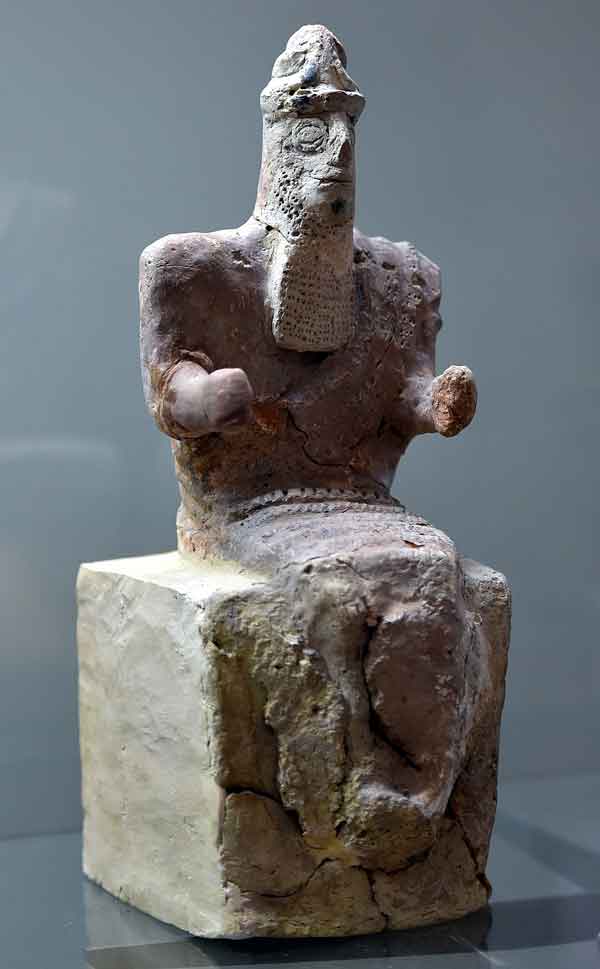
For 4,400 years, a small clay tablet lay hidden inside the ruins of the Ancient Sumerian city of Nippur (in what’s now southern Iraq). This tablet may be miniscule but it reveals a forgotten myth that expands Mespotamian storytelling.
Today, this ancient tablet (labeled Ni 12501) rests in Turkey’s Istanbul Archaeological Museums, where University of Chicago’s Sumerologist Jana Matuszak decoded its secrets this year. Published in the journal Iraq, her work unveils a tale of a cunning fox undergoing a daring rescue mission to save the Anunnaki storm god Ishkur.
The problem: the storm god’s trapped in Kur (the Mesopotamian underworld) of all places, where the fox must navigate through its perils lest the world collapses into chaos. This discovery sheds new light on the beliefs of one of humanity’s earliest civilizations, and we’ll explore below on how this story stands out from other Mesopotamian legends.
Lost & Found From Nippur
Dug up in the 19th century from Nippur’s ancient ruins, the Ni 12501 tablet is no larger than a smartphone, with a forgotten story to tell. Nippur once stood as the spiritual heart of Sumer and was home to Enlil; once the revered king of the Anunnaki gods. Crafted around 2540–2350 BCE, the tablet’s cuneiform script lay unread for decades with its broken fragments barely a third surviving tucked away in obscurity.
Then during the 1950s, Assyriologist Samuel Noah Kramer gave the tablet a nod; having featured its image in his book From the Tablets of Sumer. The tablet remained a puzzle, however, that was until Jana Matuszak’s ingenious 2025 work finally unraveled its secrets.

Using high-tech imaging and linguistic skill, Matuszak decoded the faint script. Her study shows Nippur’s role as a hub for sacred stories where tales of gods explained life’s highs and lows such as floods to crop failures. This tablet’s revival adds a new chapter to Sumerian lore, proving that there’s still much to learn from ancient archives.
A Myth of a Trapped God and a Bold Fox
The myth centers on the storm god Ishkur whose power over rains fed Mesopotamia’s fields, before being mysteriously trapped in Kur—Sumer’s grim underworld of shadows and monsters. As of 2025, it is not yet known why or how the Anunnaki got himself imprisoned in the underworld. However, Ishkur’s absence sparks chaos in the mortal realm: rivers dry up and harvests fail. Ishkur’s father Enlil then gathers a divine council in Nippur to find a rescuer that could save the trapped god and bring back the rains.
None of the Anunnaki stepped up, as many of them were wary and uneasy of the underworld’s dangers. Then, unexpected help came forth in the form of a sly fox who offered to volunteer in saving the Anunnaki king’s son. The cunning fox manages to dodge the underworld’s traps by hiding ritual offerings; a trick seen in other Sumerian stories… but the tablet breaks off leaving us wondering if the fox ever freed Ishkur.
It would appear that foxes held a special place in Mesopotamian tales, in which they’re recognized back then as crafty intermediary agents in the world of gods and humans. The fox’s symbolism as a trickster figure is older than previously thought, and its role survives all the way in present day in peoples’ memories through classic fables, children’s tales and even cartoons.
This lone furry hero’s boldness may suggest that Sumerians cheered for clever underdogs, whilst it’s also a theme that echoes across world folklore involving trickster figures (often in the guise of similar animals) that outsmart powerful entities or environments.

Pitting the Fox’s Wits Against The Underworld
This myth reveals glimpses of Sumerian life where city-states like Nippur, Ur, and Uruk flourished from 4000 to 2000 BCE, shaping early writing and religion. Tales like this bound Mesopotamian communities to their land, especially when peoples’ fields and crops are reliant on rain. Unlike the divine rescues in myths like Enki and Ninhursag or Inanna’s Descent where gods or humanoid figures are at the center of the narrative, this story marks a rare animal hero with the fox’s cunning taking the spotlight. Perhaps this narrative is a local Nippur specialty, though it’s not confirmed.
Jana Matuszak’s decipherment of Ni 12501 opens a door to the vast treasures of cuneiform collections, where numerous clay tablets lie untranslated in museums waiting to be revived. Advanced digital imaging now breathes life into these faded scripts, letting scholars like Matuszak piece together tales lost for millennia. One can hope that new finds in Iraq or archives might complete this tale; perhaps revealing extra scenes from this myth or unveiling new sagas of Sumer’s vibrant world.
Though the story’s ending fades into mystery, the fox’s bold wits against divine chaos shows how even an ordinary animal can challenge primal cosmic forces by just using mere cleverness. This 4,400-year-old tablet may be fragile and having endured the tests of time, but it still whispers ancient wisdom that animates our modern imaginations. Much like how the fox is able to outsmart the perils of the underworld using wits, this lost Anunnaki myth may inspire our own journeys in outsmarting challenges in an ever-changing world.
Top image: Arabian red foxes (Vulpes vulpes arabica) are a fox species found in Southern Iraq. Source: CC BY 4.0. Taken by Alahamali70. Statue of Hadad (another name of the Anunnaki god Ishkur) presented by Felix von Luschan et al. Source: Public Domain.
References:
- Matuszak J. OF CAPTIVE STORM GODS AND CUNNING FOXES: NEW INSIGHTS INTO EARLY SUMERIAN MYTHOLOGY, WITH AN EDITION OF NI 12501. Iraq. 2024;86:79-108. doi:10.1017/irq.2024.19
- Radley, Dario. “Ancient Sumerian Tablet Reveals Forgotten Myth of Storm God Iškur’s Captivity in the Netherworld.” Archaeology News Online Magazine, 23 July 2025, www.archaeologymag.com/2025/07/forgotten-sumerian-myth-of-storm-god-iskur/.
- Sövegjártó, S. (2021). Chapter 9 – The fox in ancient Mesopotamia: from physical characteristics to anthropomorphized literary figure (Fierce lions, angry mice and fat-tailed sheep: Animal encounters in the ancient Near East). McDonald Institute for Archaeological Research. https://doi.org/10.17863/CAM.76170


More Stories
Museum Employee Steals 3,000-Year-Old Egyptian Pharaoh’s Bracelet, Sells for $4,000
Spanish Researchers Create First Complete 3D Map of Historic La Pileta Cave Using Advanced LiDAR
Revolutionary Laser Method Reveals Age of Chinese Dinosaur Eggs for First Time